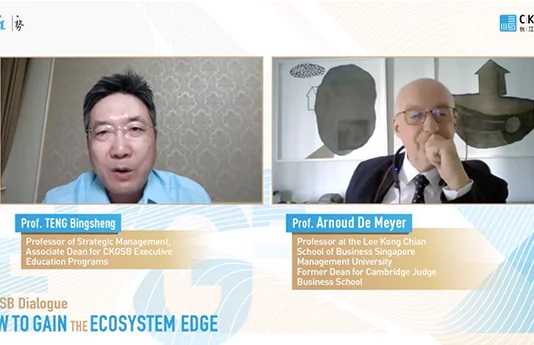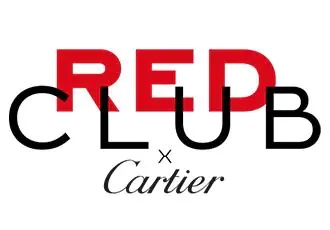University of Minnesota’s Carlos Torelli on how Coca-Cola and Elvis leveraged cultural equity to create brand loyalty.
Why is Coke more popular than Pepsi? What explains Elvis Presley’s cult-like status? According to Carlos Torelli, Associate Professor of Marketing at University of Minnesota’s Carlson School of Management, both Coke and Elvis share a common attribute: strong cultural equity. According to Torelli, “Cultural equity is the knowledge that is culturally rooted that leads consumers to do something for the brand.” So a brand like Coke is viewed in a different light as compared to Pepsi. Coke is more rooted in cultural phenomena and discussions, and is hence more popular. Remember the 1980s Coke commercial ‘Red, White and You’ that used the colors of the US flag?
Torelli, the author of Globalization, Culture, and Branding: How to Leverage Cultural Equity for Building Iconic Brands in the Era of Globalization, believes that increasingly cultural equity can help brands navigate through the choppy waters of increasingly competitive markets.
In this interview, Torelli talks about why cultural equity is important and how brands can leverage it.
Why Cultural Equity
We should start by defining a closely related concept—brand equity. Brand equity has multiple definitions, but one of the definitions that most researchers find actionable is the idea that it’s the differential effect that brand knowledge has on the marketing of a brand, meaning that as consumer I know something about the brand, I do something for that brand that I don’t do for other brands: I pay more, I choose it instead of another competitor. It is brand knowledge that leads consumers to do something favorable for the brand.
Cultural equity is the knowledge that is culturally rooted that leads consumers to do something for the brand. So it’s specifically taking from brand equity the aspect that is related to the cultural meaning that the brand has. It would mean that I would do something for a brand because there is a cultural meaning in that brand that is very abiding to me. Cultural equity is always relative.
Culture is a collective phenomenon. Culture has multiple definitions but we would agree that it’s this notion of shared meanings that allows us to operate. As human beings, we are sociable, we are collective. We might be more collective than other people but we can’t live in isolation. Human beings are not designed to live by themselves. To coordinate with other human beings, we have to establish certain rules. That’s what culture is.
It explains whether I can loop you in or not, whether I can sit down next to you or not, whether I can wear something or not. It’s not like somebody wrote those rules. We negotiate those rules, sometimes we have influence to push the rules into some order. That’s typically happened because there are, within a society, certain groups that reach a certain level of dominance. Societies are not completely homogeneous. In all societies, we have pockets of people with slightly different beliefs, values and ideas. As a large society, when I cooperate with others, some negotiations go on. But that negotiation is sometimes more vertical in nature in a sense that those that are more dominant can, in a way, channel their thoughts more easily than those that are less dominant.
Why Elvis Was so Popular
Although music is something that we all like and respond to, the things can cause us to feel good about it, are culturally defined. We don’t necessarily listen to every type of music but if it’s coming from a voice that ‘looks’ more like what the culture [thinks] appropriate, then that music becomes more popular.
Many people were doing Elvis-like music (in the 1950s) but these were mostly black musicians. In the 50s in the US, the black musicians weren’t very popular. They couldn’t perform it in public for white audiences because the West didn’t consider it appropriate. Then in the record industry, what they were looking for are white guys who could sing black music, and that was Elvis. Eventually this became a cultural phenomenon because he kind of resembled the beliefs, values and ideas that were essentially perceived at that time, to describe American culture.
That changes from culture to culture. It changes even in the same culture from time period to time period. So the American culture right now is very different from what it was when Elvis was a star. Now we see a more diverse society but still the rules of the game are the rules of the game. What becomes more popular is what we consensually decide is meaningful from our collective perspective.
Coke Versus Pepsi: Who has the Mojo?
At a very basic level, you can say that Coke is sugared water with bubbles and some colorant. Somebody might say, “Well, in a functional perspective it’s a thirst quencher.” [But] Coke is imagery. It is feelings. It is emotions. It’s connection. That’s what brand marketers want to do with their brands. It’s to appeal all these above the functionality and all these things.
Pepsi and Coke are very similar in all these dimensions. They are both [about] excitement, fun and happiness. There has to be something more for Coke that Pepsi wouldn’t have and I believe that’s the cultural meaning that the brand has. So Coke is a brand that, in American history, [is] more at the forefront of cultural discussions. It’s a brand that people perceive to be more symbolic as of the American culture than its competitors.
And how we get there? The process is a very complex because it’s collective construction. It’s not a brand doing something, it’s also what happens in society with that brand. Coke has been very good at being able to weave itself in the American fabric of culture in a way that other competitors have not. [It has] elevated itself to the level of a cultural symbol to a greater extent than its competitors. In that Coke-Pepsi comparison, it’s [okay] to say that it has to be culture equity because they are very similar in many other respects: distribution, product, imagery, advertising,… but [in terms of] the cultural meaning, consistently we find Coke superior to Pepsi.
(Watch the video below)
Can Cultural Equity Keep up With Cultural Evolution?
There are many brands that became cultural symbols [but then] that lost their luster. Cadillac [was] the ultimate symbol of American status. Well, not anymore. If you think of Kodak, a brand that also at a time was a Top 10 brand, symbol of American innovation and creativity. Well, not anymore. Brands definitely have to cope with times. How do they do that? They have to be very attuned to the cultural changes that happen in society and they have to be able to anticipate the cultural changes in a way that try to be ahead of the curve.
We think that America today is more diverse but it’s negotiating itself what’s the meaning of being an American? One of the things that happens when culture changes is that some people are happy to change and some people are not. So the society has to struggle a bit. Coke has been, for many years, embracing the diversity [in America]. Recently Coke was involved in what somebody could consider a small scandal but it didn’t cost anything to them and that proved that they’ve been attuned to the changes and are doing the right thing.
Super Bowl aired a commercial that caused a lot of controversy. It took this symbolic American song (‘America the Beautiful’) and performed it in multiple languages. Some people were infuriated that a brand like Coke, which is an American symbol, would be aligning itself with non-English speaking Americans, [rather than] what is supposed to be mainstream Americans. The notion of what mainstream American is right now is being negotiated. It’s changing. It’s more diversity. It’s more Hispanic, black, Asians becoming more part of what mainstream American is.
Coke, being aware of that, has been doing this for many years thing. But at Super Bowl, when everybody is paying attention, taking a very iconic American song and doing this was outrageous for some people. They thought it went too far. So you would expect that Coke sales would go down. No. So it means that you are also trying to align your imagery and symbolic meanings with advertising what you see happening in culture. Of course, that’s easier said than done and it’s easier for some brands and less so for others, but brands need to be attuned to these changes.
Princesses in Disney used to be white but in movies we have this African-American looking woman who is not a princess, but is a working woman. So we see more women taking a more active role in society and it’s also changing in the US. Brands need to pay attention to aligning their communication, their imagery to the new kind of negotiation happening in the culture and trying to be at the forefront.
Brands and Stories
Culture is something that’s collective and how do collective meanings emerge? It’s very complex but cultures serve the purpose. We need these shared meanings—rules of the game—so we work with each other more efficiently. Collectives are very good at sorting out what is useful and what is not. Information for us to work better gets transmitted more than information that is less useful. From a very high level, that’s how culture evolves.
As a brand you want to be able to fill the conversation with information that is useful. Of course it takes a little bit of imagination to predict what useful information in the society is, but that’s how brands are able to become relevant in a cultural discussion. They fill the cultural discussion. Cultural discussion happens nowadays at many different levels. Culture discussions [used to happen] where mass media said something and then Nielsen and other companies got numbers and said, “Yeah, this is what’s working.” Now it’s very different. Now it is [people talking on] social media and things go viral and then what you see sometimes in the news is the viral video of the day.
Now brands [both big and small] have a lot more opportunities to influence cultural discussion. Many small brands are using viral marketing to become part of the cultural discussion and elevate very quickly to the level of cultural icon, something that in the past would take a brand many years of very careful mass media coordination and trying to talk to influencers in the culture. Now there are many more influencers in the culture. There is more openness in the society right now in terms of how cultural conversations are taking place. It’s not a one-way conversation. It’s a multiple-way conversation in which this meaning set is being created.
Do Sub-cultures Matter?
How do you manage when you are a big brand? How do you become relevant for multiple audiences that are culturally diverse? There has always been this debate between the standardization and the customization. We’ve been having that discussion for many years but still, it boils down to: to what extent should I keep the same image everywhere. So I’m consistent globally or I’m trying to make that image more relevant to different audiences. It’s a big challenge but if brands want to become very connected with multiple audiences, they cannot escape customizing their image.
Then the question is: what do you customize? Do you customize just an aspect of your communication or the whole proposition? Probably for global brands, you have to keep a lot of consistency but you still can customize ‘how I become relevant to you’ in terms of ‘what’s the message that we deliver to you’.
So, how do you manage that? Do you keep a core image and then fine tune it, or do you decide to have an image in this place, a [different] image in the other place? This is something that we still need to develop: what’s the optimal proposition? Personally I think that brands can do a lot of fine tuning to the core image and that is in their best interest. That’s why when brands are going global they appeal to what we would call ‘culturally congruent markets’ or ‘culturally compatible markets’. These are markets that although are different, share something in common. Sometimes this essence that they share in common, you can’t communicate, and then you just need to adapt and that’s how you deliver the message. So it’s like having this common message that can be appealing to everybody, but delivering it in a way that you are going to understand it better. Therefore, we can have multiple delivery propositions. But thinking of a common message that can be appealing to the values and beliefs of the broader audiences is what a global brand should be doing.
(Photo courtesy: Coca-Cola)




















